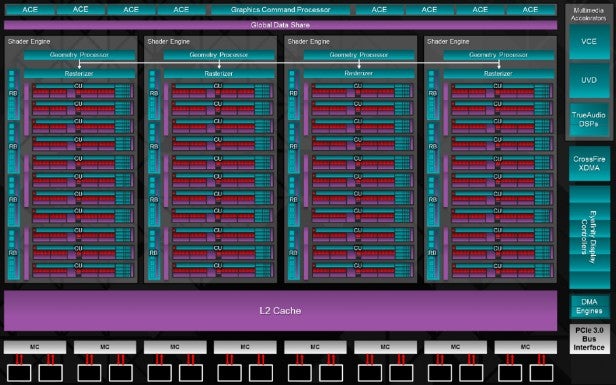Nvidia GeForce GTX 970 v AMD Radeon R9 290

Nvidia GeForce GTX 970 v AMD Radeon R9 290: Which is best?
A graphics card is one of the most expensive upgrades you can buy for a PC, but it also has one of the biggest impacts on gaming performance – it’s possible to turn a system from a sub-console chugger into a next-gen marvel with one new component.
The latest £250-£300 cards from Nvidia and AMD are tempting slabs of silicon that can do wonders for an older system – or give a new build the grunt to outpace the current consoles.
Nvidia’s GeForce GTX 970 is the newer and more expensive GPU, with prices that run from £260 to £316. It’s a reply to AMD’s Radeon R9 290, which has been cut in price and now looks like a plucky underdog, with prices that start at £220 before topping out at £287.
Nvidia GeForce GTX 970 v AMD Radeon R9 290: Under The Bonnet
The GTX 970 deploys Nvidia’s Maxwell architecture, which was first introduced in the mid-range GTX 750 Ti earlier this year. This time around it’s in a high-end product, which means a boosted specification: 1,664 stream processors, a base clock of 1,050MHz, a boost peak of 1,178MHz and 4GB of GDDR5 memory that runs at 7GHz. It’s the same GPU that’s found inside the range-topping GTX 980, but here it’s had some of its stream processors disabled to produce a cheaper, slightly slower card.
SEE ALSO: Nvidia GeForce GTX Ti vs AMD Radeon R7 265
Maxwell isn’t just about performance, though – it’s also about reducing power consumption. Nvidia has done that by reconfiguring how its stream processors are deployed, with work now divided between smaller, more efficient groups rather than big chunks of hardware.
As for the AMD’s R9 290, it shares the Hawaii GPU found inside the flagship R9 290X card but, like with the GTX 970, not all of it is being used. It’s been cut down to size – it’s now got only 40 computer units, rather than the 44 used in AMD’s top-end product.
SEE ALSO: Best SSD Group Test
It’s somewhat meaningless to compare the underlying numbers of these cards as they use such vastly different internal structures to perform their calculations, but for what it’s worth, the R9 290 has more stream processors than the Nvidia card – 2,560 – but its 947MHz core clock is a tad slower.
The memory situation is interesting: AMD’s card has 4GB of GDDR5 memory, like the GTX 970, and it’s addressed using a 512-bit memory bus – twice the width of the bus used on the Nvidia GPU. However, AMD’s R9 290 runs its RAM at 5GHz rather than 7GHz.
SEE ALSO: AMD Radeon R9 280X vs Nvidia GeForce GTX 770
Nvidia GeForce GTX 970 v AMD Radeon R9 290: How We Tested
We’ve tested these powerful cards with five games: Batman: Arkham Origins, Battlefield 4, Bioshock Infinite, Crysis 3 and Metro: Last Light. Each title is run at its highest settings, and we’ve tested each game at 1,920 x 1,080, 2,560 x 1,440 and 3,840 x 2,160 – 4K.
We’ve also used a selection of synthetic benchmarks to test the raw horsepower of these GPUs, with 3D Mark Fire Strike and Unigine Heaven 4.0 both used to test the raw horsepower of these GPUs.
We’ve measured the idle and peak temperatures of the two cards, and noted the idle and peak power requirements of our test rig, which comprises of an Asus X79-Deluxe motherboard, Intel Core i7-4960X processor, 16GB of RAM and a 1TB hard disk.
To get prices for each card we visited www.scan.co.uk and noted down the range of prices for each card, although we will be referring to the various overclocked and tweaked models available for each GPU, which will be more expensive.


